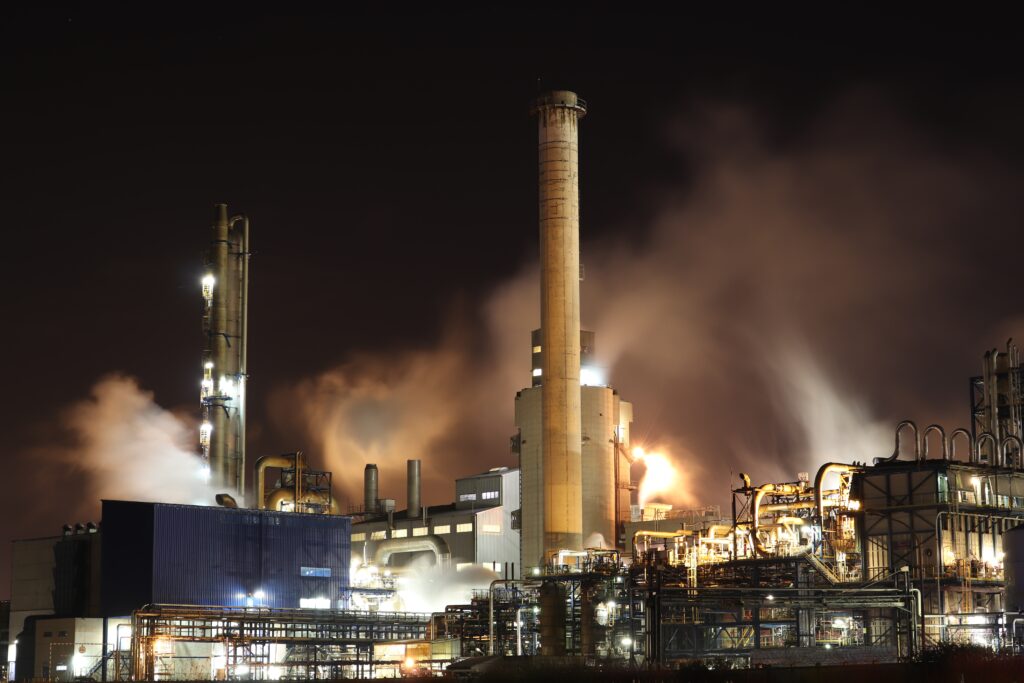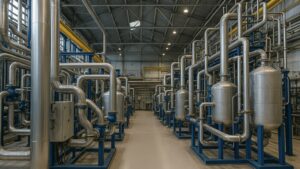The oil and gas industry stands at a crossroads. For over a century, it has powered the world’s vehicles, factories, homes, and more. But with climate change accelerating, fossil fuels face an uncertain future. Renewables are booming while global deals aim to slash emissions. Major players see change on the horizon.
This seismic shift is spurring some trends and innovation in the oil and gas industry. Companies are adopting cleaner practices, digital technologies, and advanced materials. They aim to cut emissions while remaining productive and profitable. This balancing act will define the industry for decades.
New trends in the oil and gas industry are emerging. This is particularly true in exploration, drilling, production, and beyond. This article explores the key developments shaping the oil and gas sector of tomorrow. Though fossil fuels still dominate, the writing is on the wall. Change is coming – whether firms prepare or not.
Transitioning to cleaner energy sources
There is increasing pressure on the oil and gas industry to switch to cleaner sources as carbon emissions or climate change are raising concerns. As a result, it is common to see businesses transitioning to energy sources like geothermal, wind, or solar. Additionally, we are seeing a shift from conventional hydrocarbon exploration to reduced carbon techniques.

Using natural oil, rather than coal, would be one example of trends in the oil and gas industry. This transformation is progressing due to rising restrictions and declining renewable energy costs. What the future holds for the oil and gas industry will depend on how quickly this change proceeds, though.
Utilizing advanced digital technologies
Next-generation digital technologies are being progressively embraced by the oil and gas sector. These innovations in the oil and gas industry boost productivity and cut expenses. Thus, it is clear that artificial intelligence and machine learning-based advanced analytics are in use. They are demonstrating their worth in terms of improving drilling, production, and exploratory operations. Additionally, we anticipate that the following technologies will be beneficial.
- Remote asset monitoring and maintenance are made possible by drones, robots, sensors, and IoT devices.
- Technologies like AR and VR help technicians with difficult tasks and offer immersive training.
- Blockchain makes it easier to track and control the supply chain.
- To enhance modeling, forecasting, and decision-making, big data analytics helps reveal hidden insights.
As a result, the use of these digital technologies has improved the efficiency, intelligence, and safety of oil and gas operations.
Enhanced oil recovery techniques
Techniques for enhanced oil recovery (EOR) are essential nowadays. They increase output from developing oil resources. Moreover, techniques like gas injection, chemical flooding, and microbial EOR aid in the mobilization of additional oil. Following the primary and secondary recovery operations, this oil remains trapped in reservoirs.
So pumping gases like CO2 into wells helps pressurize reservoirs and push oil towards production wells. The chemical methods alter oil properties to improve flow. Furthermore, microbial EOR uses engineered microorganisms that generate chemicals in situ to increase mobility. EOR allows higher recoveries of 30-60% of oil in place. EOR does it through large proven reserves inaccessible with conventional methods. Although capital-intensive, EOR is a cost-effective way to add billions of barrels of economically viable reserves. This is one of the most sought-after trends in the oil and gas industry.
Small modular reactors
For remote oil and gas activities, small modular reactors (SMRs) are a cutting-edge, emission-free power source. SMRs may be produced and delivered to remote oilfields without access to grids because they are smaller than major nuclear plants.
Additionally, their meager output of about 300MW is sufficient for drilling and production requirements. Self-contained SMRs need to be refueled once every five to ten years. As a result, it prevents carbon emissions from burning and transporting fuel continuously. SMRs work effectively to supply steam and electricity. This is because they have reduced initial costs and better safety measures. In order for heavy oil to flow, it must be extracted. SMRs are positioned to replace diesel as oil production shifts to tougher environments.
AI-optimized exploration
With few wells yielding discoveries, exploration continues to be a risky business. However, AI-based analytics raises the likelihood of more accurately interpreting seismic data. This information aids in locating hydrocarbon signatures. In addition, sophisticated machine learning algorithms can identify intricate geological patterns. It comprises canals and faults that could harbor hydrocarbons.
This makes it possible for geologists to precisely pinpoint where to drill. Real-time data analytics during drilling assists in modifying the drill path. One of the trends in the oil and gas industry will help you maintain your target zone and increase output. The processing of seismic data is being accelerated by AI, going from months to just days. AI provides a competitive edge in exploration by streamlining the process of data collection, analysis, and action.
Improving Water Management Practices
Unconventional oil and gas production techniques face a serious problem with water management. This includes the use of enormous amounts of water in hydraulic fracturing. By boosting wastewater recycling and reuse, the oil and gas industry is implementing more sustainable water practices.
It consequently lowers the need for freshwater and enhances disposal methods. Additionally, they are creating novel, non-hazardous, waterless fracking fluids. They are using substitutes like carbon dioxide and liquid propane to do this. Nevertheless, stricter limits on the recycling and disposal of sewage will keep driving innovations in the oil and gas industry.
Investing in Carbon Capture and Storage
The crucial emissions reduction technique known as carbon capture, utilization, and storage (CCUS) is gaining popularity. In CCUS, CO2 emissions from processes utilizing hydrocarbons are captured. It sequesters them deep beneath and transports them using pipelines.
Consequently, a lot of oil and gas companies are taking part in experimental programs. They are doing this to show how CCUS can be scaled and used commercially. Large-scale CCUS deployment may happen if prices decrease and carbon emission rules are tightened. This may also help with the energy transition and reduce emissions from the use of fossil fuels.
Developing Advanced Materials
Advanced materials are being created by oil and gas companies. This comprises ceramics, nanocoatings, nickel-steel alloys, and composites. Additionally, businesses are developing stronger parts for drilling, exploration, and transportation systems. Innovations in materials science are producing pipes, valves, cement, rigs, and other machinery. These pieces of machinery are:
- lighter,
- more corrosion-resistant
- stable at high temperatures.
- they can also be produced utilizing 3D printing methods.
Exploration and operation in increasingly difficult situations are made possible by advanced materials. For instance, longer pipelines and deeper waters. They also lower maintenance expenses and increase safety.
To sum up
The oil and gas industry is making bold moves to reinvent itself for a carbon-free future. As we see environmental regulations getting strict fossil companies need to stay innovative to remain relevant. Companies that transition quickly towards cleaner and high-tech business models are best positioned to lead in the future. But there are still challenges around policy and techno-economics. These challenges need to be worked out for the discussed trends to reach their full potential. To help you achieve the same goal, the Net Zero Energy Production Summit in Amsterdam, Netherlands on 30-31st January 2024 is the right place to be. You can also visit future-bridge.eu and netzero-events.com or follow us on our social media to track energy use and decarbonization events to help you tap into the trends of the oil and gas industry.





